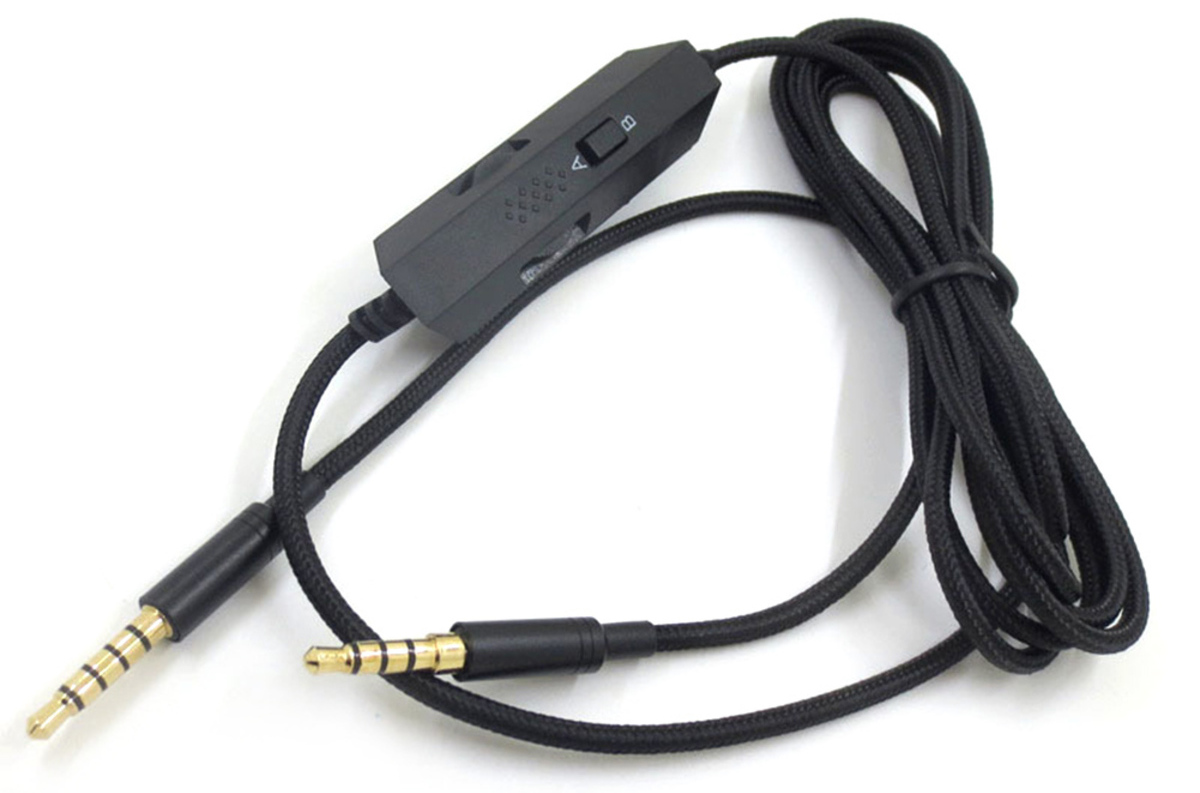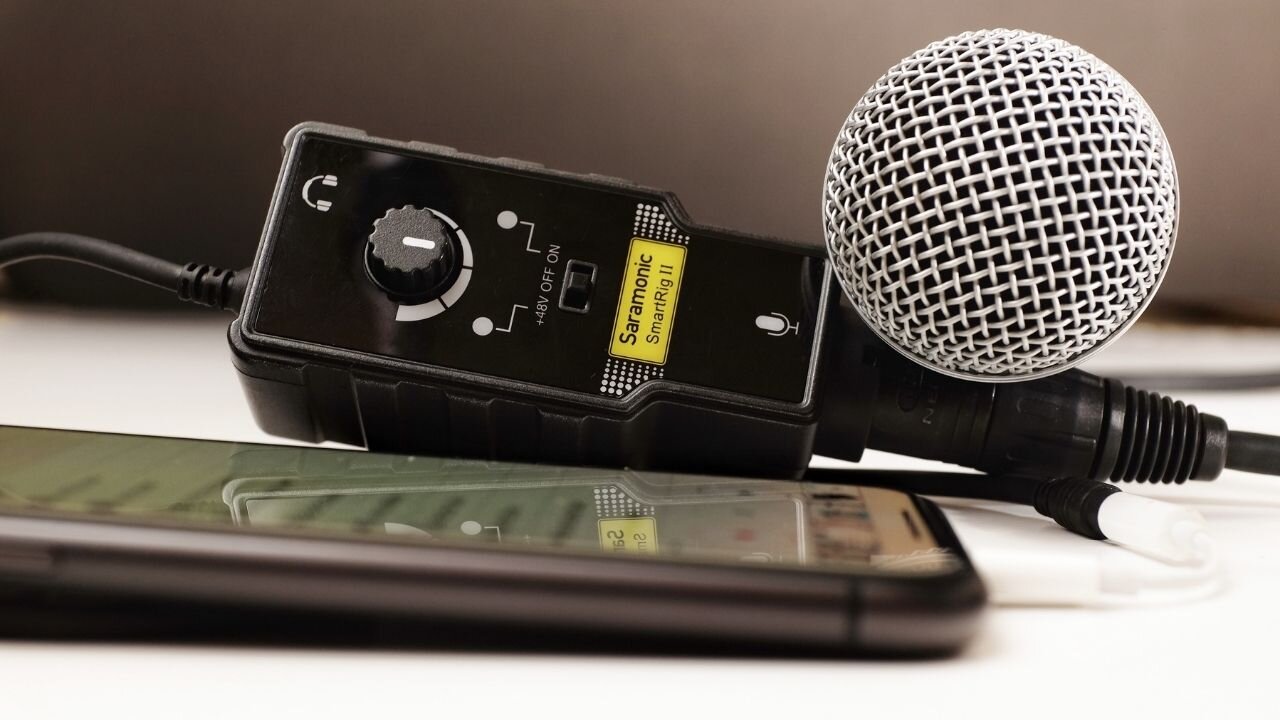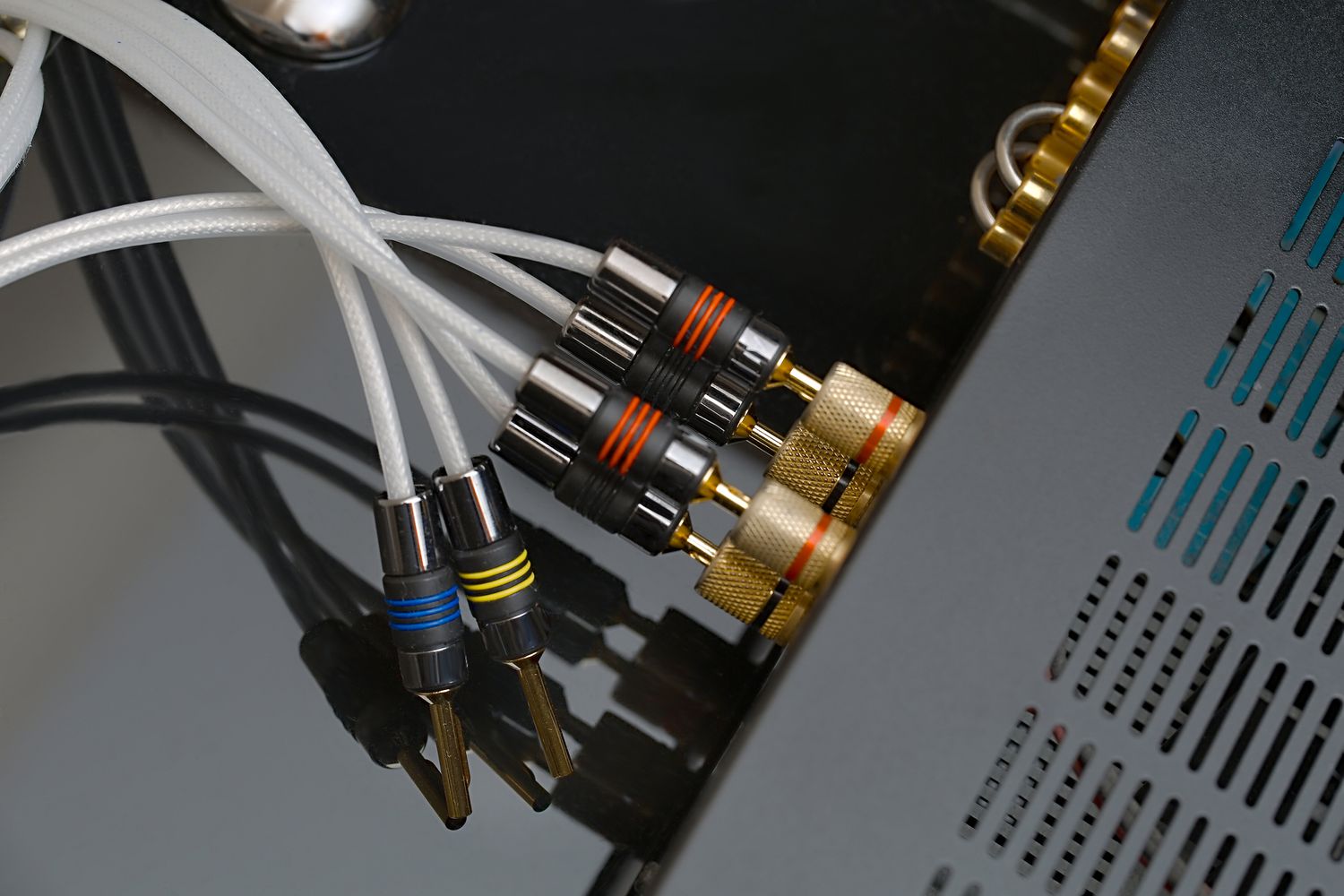Home>Production & Technology>Audio Cable>How To Use Virtual Audio Cable To Mic Spam


Audio Cable
How To Use Virtual Audio Cable To Mic Spam
Modified: January 22, 2024
Learn how to effectively use Virtual Audio Cable to mic spam and enhance your audio experience. Discover the power of Audio Cable today!
(Many of the links in this article redirect to a specific reviewed product. Your purchase of these products through affiliate links helps to generate commission for AudioLover.com, at no extra cost. Learn more)
Table of Contents
Introduction
Welcome to the world of audio cables! In today’s digital age, audio cables play a crucial role in connecting various devices and ensuring high-quality sound transmission. Among the myriad of audio cables available, one particular type stands out: virtual audio cables. Virtual audio cables have revolutionized the way audio is transmitted and are widely used in professional settings, gaming, and entertainment.
But what exactly is a virtual audio cable? In simple terms, it is a software-based solution that allows you to route audio signals between different applications or devices on your computer. It acts as a virtual conduit, simulating the functionality of physical audio cables.
Virtual audio cables offer a myriad of possibilities in terms of audio routing and manipulation. One of the most exciting applications is mic spamming – the act of playing pre-recorded audio clips through a microphone to surprise, entertain, or annoy others in real-time communication platforms, such as gaming voice chats or virtual meetings.
In this article, we will dive deep into the world of virtual audio cables and explore how to use them for mic spamming. We will cover everything from setting up virtual audio cables to configuring your microphone and using specialized tools for mic spamming. So, get ready to have some audio fun!
What is Virtual Audio Cable?
Virtual Audio Cable, also known as VAC, is a software application that emulates the functionality of physical audio cables on your computer. It creates virtual cables, which act as virtual audio channels for routing audio signals between different applications or devices.
With virtual audio cables, you can create virtual connections, just like you would with physical cables. This means you can route audio from one application to another, allowing for flexible audio routing and manipulation on your computer.
Virtual audio cables are commonly used in professional audio production to route audio signals between digital audio workstations, audio interfaces, and other audio processing software. They provide a convenient way to control and manage audio inputs and outputs within a digital audio workflow.
In addition to professional audio production, virtual audio cables have gained popularity in the gaming and entertainment communities. Gamers, streamers, and content creators often utilize virtual audio cables to enhance their audio setup and create immersive experiences for their audience.
By using virtual audio cables, you can achieve a variety of audio-related tasks, such as:
- Audio Mixing: You can mix multiple audio sources together and send the combined audio to a different application or device. This is particularly beneficial when you want to add background music or sound effects to your livestream or gaming session.
- Audio Recording: Virtual audio cables allow you to record audio from one application while playing audio from another. This is useful when you want to capture audio from a game or a video while also recording your microphone input.
- Audio Monitoring: Virtual audio cables enable you to monitor audio inputs in real-time. This is helpful when you want to monitor your microphone input while simultaneously listening to game sounds or other audio sources.
- Virtual Surround Sound: Some virtual audio cable applications provide support for virtual surround sound, allowing you to create an immersive audio experience with compatible headphones or speakers.
Overall, virtual audio cables offer a versatile and powerful toolset for managing and manipulating audio on your computer. Whether you are a professional audio producer, a gamer, or simply want to enhance your audio experience, virtual audio cables can elevate your audio setup to the next level.
Setting Up Virtual Audio Cable
Setting up Virtual Audio Cable (VAC) on your computer is a straightforward process. You will need to follow a few steps to install and configure the software to work with your audio setup.
Step 1: Download and Install Virtual Audio Cable Software
The first step is to download the Virtual Audio Cable software from a trusted source. There are various versions available, both free and paid, so make sure to choose the one that suits your needs. Once downloaded, run the installer and follow the on-screen instructions to install the software on your computer.
Step 2: Configuring Audio Settings
After the installation process is complete, you will need to configure the audio settings on your computer to work with Virtual Audio Cable. To do this, navigate to the audio settings on your operating system.
In Windows, you can access the audio settings by right-clicking on the speaker icon in the system tray and selecting “Sounds” or “Playback Devices.” In the audio settings, make sure that the Virtual Audio Cable device is selected as the default playback and recording device.
Step 3: Route Audio Signals
Once the audio settings are configured, you can start routing audio signals using Virtual Audio Cable. To set up a virtual audio cable connection, you will need to open the Virtual Audio Cable control panel or configuration application that came with the software.
In the control panel, you will see a window with a list of virtual audio cables that have been created. You can create new cables by clicking on the “Add New Cable” button or configure existing cables by selecting them from the list.
To route audio signals, simply select the virtual cable as the output device in one application and set it as the input device in another application. This will enable audio to flow from the first application to the second through the virtual audio cable.
Step 4: Test and Adjust
Once you have set up the virtual audio cable connections, it’s essential to test and adjust the audio settings to ensure everything is working correctly. Play audio from one application and verify that it is being received and played back in the desired destination application.
If you encounter any issues or need further customization, you can explore the additional settings and options within the Virtual Audio Cable application. It offers various features and advanced settings, such as buffer size adjustments, sample rate settings, and control over the number of virtual cables.
With Virtual Audio Cable successfully set up on your computer, you can now explore the endless possibilities of audio routing and manipulation. Whether you want to record audio, mix different sources, or create virtual surround sound, Virtual Audio Cable provides the flexibility and control you need to enhance your audio experience.
Configuring Microphone in Virtual Audio Cable
Configuring your microphone within Virtual Audio Cable (VAC) is an important step to ensure proper audio routing and capture. By setting up your microphone correctly, you’ll be able to route its audio output to other applications or devices using virtual audio cables. Here’s how to configure your microphone in VAC:
Step 1: Open Virtual Audio Cable Control Panel
To configure your microphone in VAC, open the Virtual Audio Cable control panel or configuration application on your computer. This can usually be found by searching for “Virtual Audio Cable” in your start menu or by navigating to the installation folder.
Step 2: Create a Virtual Cable Connection
Before configuring your microphone, you’ll need to set up a virtual cable connection. In the Virtual Audio Cable control panel, click on the “Add New Cable” button to create a new virtual cable. This cable will serve as the pathway for routing your microphone’s audio output.
Step 3: Select the Microphone as Playback Device
In the control panel, locate the virtual cable that you just created. Click on the drop-down menu under “Playback” for that cable and select your physical microphone as the playback device. This ensures that the microphone’s audio output is routed to the virtual cable.
Step 4: Configure Applications
Once your microphone is set up within VAC, you can configure the applications or devices that will receive its audio output. In each application or device that you want to use your microphone with, ensure that the virtual cable you created is selected as the input or recording device.
For example, in a video conferencing application, navigate to the audio settings and select the virtual cable as the microphone input device. This will route the microphone’s audio output, captured by VAC, to the application for online meetings, streaming, or any other purposes.
Step 5: Adjust Audio Settings
After configuring the applications, it’s essential to adjust the audio settings to ensure optimal audio quality and levels. In the preferences or settings of each application, you can adjust the microphone volume, gain, or other audio-related parameters according to your requirements.
Additionally, you can also explore the VAC control panel for advanced microphone configuration options. These may include buffer size adjustments, sample rate settings, or latency settings, depending on the specific capabilities of the VAC software you are using.
Step 6: Test and Troubleshoot
To ensure that your microphone is configured correctly, conduct some test recordings or audio transmissions in the applications you have set up. Verify that the microphone’s audio output is being captured by VAC and properly routed to the applications or devices using the virtual audio cable.
If you encounter any issues during the configuration process, double-check that the microphone and the virtual cable are selected correctly in the respective settings. Also, ensure that the microphone is not being used by any other application simultaneously, which could cause conflicts in audio routing.
By successfully configuring your microphone in Virtual Audio Cable, you can leverage its capabilities to route the microphone’s audio output to various applications or devices. This opens up a world of possibilities for professional audio production, streaming, gaming, or any other use case where flexible audio routing is required.
Setting up Mic Spammer
Mic spamming is an entertaining and sometimes mischievous practice of playing pre-recorded audio clips through a microphone in real-time communication platforms such as gaming voice chats or virtual meetings. To set up a mic spammer using Virtual Audio Cable (VAC), you’ll need to follow these steps:
Step 1: Select and Prepare Audio Clips
The first step is to select the audio clips you want to use for mic spamming. These can be funny sound effects, famous movie quotes, or any other sound bites that you find amusing. Make sure to have the audio clips stored on your computer in a format compatible with VAC, such as MP3 or WAV.
Step 2: Create Virtual Cable Connections
In the Virtual Audio Cable control panel or configuration application, create virtual cable connections for mic spamming. Each virtual cable will represent a separate channel for routing audio. You can create multiple cables to assign different audio clips to different channels for added versatility.
Step 3: Configure Your Microphone
Ensure that your microphone is correctly configured within VAC, as described in the previous section. This will allow you to route the audio clips to your microphone’s output, which will then be transmitted through the virtual cables to the desired applications or devices.
Step 4: Configure Mic Spammer Application
To control the mic spamming process, you’ll need a mic spammer application that can play the pre-recorded audio clips through your microphone. There are various mic spammer applications available online, both free and paid, such as Clownfish Voice Changer or MorphVox Pro. Install and configure the mic spammer application according to its instructions.
Step 5: Map Audio Clips to Virtual Cables
In the mic spammer application, assign each audio clip to the corresponding virtual cable connection. This mapping will ensure that when you trigger the audio clip, it will be played through the designated virtual cable, which in turn will route the sound to your microphone’s output.
Step 6: Test and Tweak
Before unleashing your mic spammer, conduct some test sessions to ensure everything is working as expected. Test each audio clip to ensure it plays through the correct virtual cable and that the sound is transmitted smoothly through your microphone to the desired applications or devices.
Remember to adjust the volume levels and timing settings in the mic spammer application to ensure that the audio clips are played at an appropriate volume and with the desired timing. Fine-tune these settings to create an entertaining or humorous mic spamming experience.
Important Note: It’s crucial to use mic spamming responsibly and consider the environment you are in. Make sure to respect the rules and guidelines of the platforms or communities you are participating in. Mic spamming should be done for harmless fun and not to harass or disrupt others.
By following these steps, you can set up a mic spammer using Virtual Audio Cable, allowing you to surprise, entertain, or maybe even annoy others with your collection of audio clips. Have fun, be creative, and enjoy the amusing possibilities that mic spamming with VAC can offer!
Using Virtual Audio Cable for Mic Spam
Now that you have set up the mic spammer using Virtual Audio Cable (VAC), it’s time to unleash your creativity and have some fun with mic spamming. Here’s how to use VAC effectively for mic spamming:
Step 1: Join the Targeted Communication Platform
To begin mic spamming, join the communication platform where you want to engage in the fun. This could be a gaming voice chat, a virtual meeting, or any other platform that supports real-time voice communication.
Step 2: Enable Virtual Audio Cable as the Microphone Input
In the settings or audio preferences of the targeted communication platform, select the virtual cable created in VAC as your microphone input device. This will ensure that any audio played through the virtual cable will be transmitted through your microphone to the platform.
Step 3: Trigger the Mic Spammer
In the mic spammer application you configured in the previous steps, trigger the playback of the pre-recorded audio clips. This can typically be done by using hotkeys or a user-friendly interface provided by the mic spammer application. Each audio clip will be played through the virtual cable and transmitted to the targeted communication platform as if you were speaking.
Step 4: Monitor and Adjust Audio Levels
While mic spamming, it’s important to monitor the audio levels to ensure that your sound is not too loud or distorted. Use the audio settings of the mic spammer application or the communication platform to adjust the volume levels and prevent audio clipping or distortion.
Step 5: Interact and Engage
As you engage in mic spamming, interact with the other participants in the platform. Whether you’re aiming to surprise, entertain, or generate laughter, be mindful of the reactions of others. Gauge their responses and adjust your mic spamming tactics accordingly to maintain a fun and positive atmosphere.
Important Note: Remember to use mic spamming responsibly and with consideration for others. Ensure that the mic spamming activity aligns with the guidelines and rules set by the platform or community you are participating in. Always prioritize creating a fun and enjoyable experience for all participants.
With VAC and your mic spammer set up, you can now add an extra level of entertainment and excitement to your online interactions. Whether you want to surprise your gaming buddies with funny sound effects or inject humor into a virtual meeting, mic spamming with Virtual Audio Cable opens up a world of creative possibilities!
Conclusion
Virtual Audio Cable (VAC) is a versatile and powerful tool that allows you to route and manipulate audio signals on your computer. Whether you’re a professional audio producer, a gamer, or simply looking to enhance your audio experience, VAC offers endless possibilities.
In this article, we explored the world of virtual audio cables and how to use them for mic spamming. We learned that virtual audio cables emulate the functionality of physical audio cables, providing a software-based solution to route audio between different applications or devices.
We discussed the steps to set up VAC, including downloading and installing the software, configuring audio settings, creating virtual cable connections, and testing the setup. We also covered how to configure your microphone within VAC to ensure proper audio routing and capture.
Additionally, we delved into the process of setting up a mic spammer using VAC, which involves selecting and preparing audio clips, mapping them to virtual cables, and configuring a mic spammer application. We emphasized the importance of using mic spamming responsibly and respecting the rules and guidelines of the platforms or communities you are participating in.
Finally, we discussed how to effectively use VAC for mic spamming. This involved enabling VAC as the microphone input in the targeted communication platform, triggering the mic spammer to play the pre-recorded audio clips, monitoring and adjusting audio levels, and engaging with other participants.
Remember, while mic spamming can be a fun and entertaining activity, it should always be done with consideration for others. Be mindful of the reactions of those around you and ensure that the mic spamming experience remains enjoyable for everyone involved.
In conclusion, Virtual Audio Cable opens up a world of creative possibilities for audio routing and manipulation. Whether you’re utilizing VAC for professional audio production, gaming, or mic spamming, it provides a valuable toolset to enhance your audio experience and take it to new heights.











